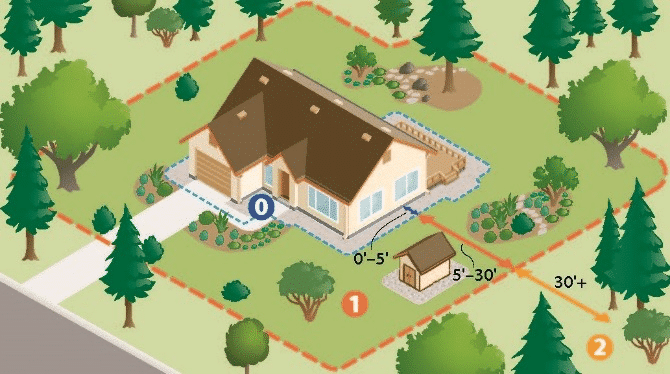
Now is a great time to work on improving and maintaining the Defensible Space around your property. Reducing the amount of flammable material available to wildfires is an essential step in safeguarding your home from wildfire. This can include clearing storm-downed trees and limbs, thinning out small trees and shrubs to break up continuity of wildfire fuels, and removing lower limbs and vegetation under trees that could carry fire into the tree canopy. By reducing the fuel load, the spread and intensity of wildfires can be significantly diminished, increasing the chances of containment and minimizing the damage caused. Done right, it also enhances ecosystem health by reducing competition and water stress, allowing for the regeneration of desirable native species, promoting biodiversity, removing invasive species, and more.
But what to do with the woody vegetation you are removing? Here are a few options:
- Take advantage of the Napa County Chipping Program, which is slated to start up again in April. Stack piles according to the guidelines, including maximum individual pile size of 50 feet long, 3 feet high by 10 feet wide (deep), and be sure to locate piles accessible to the chipper. Burned/charred wood cannot be chipped, because it generates hazardous dust, so if you are dealing with wildfire cleanup, consider the next option:
- Stack material in piles and burn after fire season and before (between) heavy rains, following best practices for safety, minimizing smoke, and of course, following all regulations. View our handy guide to pile burning, including how to navigate the permits and notifications, and learn more tips for a cleaner burn on the Napa Firewise website.
- Join a Workshop to learn more about burning, or sign up to learn about the newly forming Napa Prescribed Burn Association
- You can also hire a contractor with a chipper, air curtain burner or other cleaner burn equipment.
To help defray the cost of hiring help to complete defensible space work, Napa Firewise has a Defensible Space Cost Share program. Participating Napa County residents in the high/very high fire hazard zone can receive 50% reimbursement up to $3500 for qualified projects. For low-income homeowners who have lived full-time in their homes since 2020 and meet qualifications, ReCover CA offers federal grants up to $50,000 for defensible space and home-hardening improvements. And for those with more than 5 acres of undeveloped land, look into Napa Resource Conservation District’s NBFIP and the USDA Natural Resources Conservation Service technical and financial assistance programs.
The work done now to prepare will help make your home and community safer during fire season. Together, we can create more fire resilient communities.
Nature note: limbing-up trees and removing brush for defensible space can be done year-round, but November through January is the ideal time to avoid disturbing nesting birds. Keep an eye out for bird nests starting in February. Consult California Oaks for guidance for pruning oak trees or consult an arborist.

